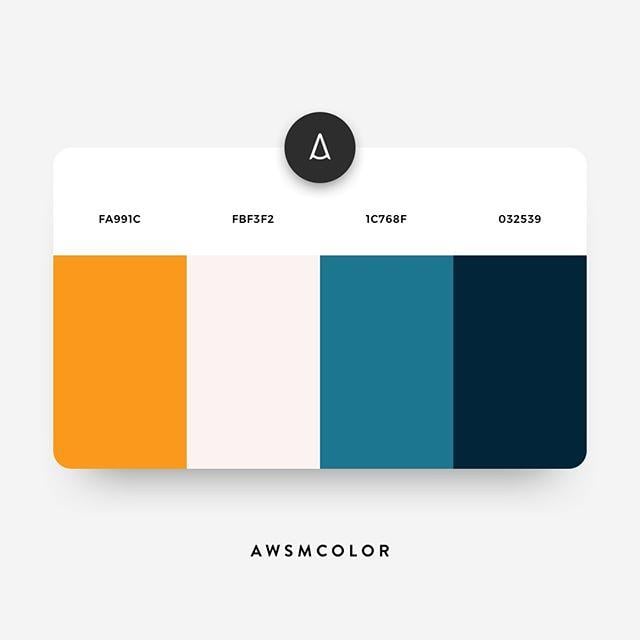The Python Imaging Library handles raster images; that is, rectangles ofpixel data.
Bands¶
An image can consist of one or more bands of data. The Python Imaging Libraryallows you to store several bands in a single image, provided they all have thesame dimensions and depth. For example, a PNG image might have ‘R', ‘G', ‘B',and ‘A' bands for the red, green, blue, and alpha transparency values. Manyoperations act on each band separately, e.g., histograms. It is often useful tothink of each pixel as having one value per band.
Alternatives to Color Palette from Image for Web, Mac, Windows, Linux, iPhone and more. Filter by license to discover only free or Open Source alternatives. This list contains a total of 25+ apps similar to Color Palette from Image. List updated: 5/8/2020 10:07:00 AM. Creates a color palette from any images Adjust the colors using the gamma correction tool or manually using the color sliders. Setting the number of colors Border type and width settings Selecting the area of the target image Orientation setting Ratio setting Print images and color swatches with color values.
To get the number and names of bands in an image, use thegetbands() method.
Modes¶
The mode of an image is a string which defines the type and depth of a pixel in the image.Each pixel uses the full range of the bit depth. So a 1-bit pixel has a rangeof 0-1, an 8-bit pixel has a range of 0-255 and so on. The current releasesupports the following standard modes:
1(1-bit pixels, black and white, stored with one pixel per byte)L(8-bit pixels, black and white)Index of photoshop cs6 keygen.
P(8-bit pixels, mapped to any other mode using a color palette)RGB(3x8-bit pixels, true color)RGBA(4x8-bit pixels, true color with transparency mask)CMYK(4x8-bit pixels, color separation)YCbCr(3x8-bit pixels, color video format)Note that this refers to the JPEG, and not the ITU-R BT.2020, standard
LAB(3x8-bit pixels, the L*a*b color space)HSV(3x8-bit pixels, Hue, Saturation, Value color space)I(32-bit signed integer pixels)F(32-bit floating point pixels)
Pillow also provides limited support for a few special modes, including:
LA(L with alpha)PA(P with alpha)RGBX(true color with padding)RGBa(true color with premultiplied alpha)La(L with premultiplied alpha)I;16(16-bit unsigned integer pixels)I;16L(16-bit little endian unsigned integer pixels)I;16B(16-bit big endian unsigned integer pixels)I;16N(16-bit native endian unsigned integer pixels)BGR;15(15-bit reversed true colour)BGR;16(16-bit reversed true colour)BGR;24(24-bit reversed true colour)BGR;32(32-bit reversed true colour)
However, Pillow doesn't support user-defined modes; if you need to handle bandcombinations that are not listed above, use a sequence of Image objects.
You can read the mode of an image through the modeattribute. This is a string containing one of the above values.
Size¶
You can read the image size through the sizeattribute. This is a 2-tuple, containing the horizontal and vertical size inpixels.
Coordinate System¶
The Python Imaging Library uses a Cartesian pixel coordinate system, with (0,0)in the upper left corner. Note that the coordinates refer to the implied pixelcorners; the centre of a pixel addressed as (0, 0) actually lies at (0.5, 0.5).
Coordinates are usually passed to the library as 2-tuples (x, y). Rectanglesare represented as 4-tuples, with the upper left corner given first. Forexample, a rectangle covering all of an 800x600 pixel image is written as (0,0, 800, 600).
Palette¶
The palette mode (P) uses a color palette to define the actual color foreach pixel.
Info¶

You can attach auxiliary information to an image using theinfo attribute. This is a dictionary object.
How such information is handled when loading and saving image files is up tothe file format handler (see the chapter on Image file formats). Mosthandlers add properties to the info attribute whenloading an image, but ignore it when saving images.

You can attach auxiliary information to an image using theinfo attribute. This is a dictionary object.
How such information is handled when loading and saving image files is up tothe file format handler (see the chapter on Image file formats). Mosthandlers add properties to the info attribute whenloading an image, but ignore it when saving images.
Orientation¶
A common element of the info attribute for JPG andTIFF images is the EXIF orientation tag. This is an instruction for how theimage data should be oriented. For example, it may instruct an image to berotated by 90 degrees, or to be mirrored. To apply this information to animage, exif_transpose() can be used.
Filters¶
For geometry operations that may map multiple input pixels to a single outputpixel, the Python Imaging Library provides different resampling filters.
PIL.Image.NEAREST¶Pick one nearest pixel from the input image. Ignore all other input pixels.
PIL.Image.BOX¶Pick Color Palette From Image
Each pixel of source image contributes to one pixel of thedestination image with identical weights.For upscaling is equivalent of NEAREST.This filter can only be used with the resize()and thumbnail() methods.
PIL.Image.BILINEAR¶For resize calculate the output pixel value using linear interpolationon all pixels that may contribute to the output value.For other transformations linear interpolation over a 2x2 environmentin the input image is used.
PIL.Image.HAMMING¶Produces a sharper image than BILINEAR, doesn't have dislocationson local level like with BOX.This filter can only be used with the resize()and thumbnail() methods.
New in version 3.4.0.
PIL.Image.BICUBIC¶How to find word in macbook air. For resize calculate the output pixel value using cubic interpolationon all pixels that may contribute to the output value.For other transformations cubic interpolation over a 4x4 environmentin the input image is used.
PIL.Image.LANCZOS¶Calculate the output pixel value using a high-quality Lanczos filter (atruncated sinc) on all pixels that may contribute to the output value.This filter can only be used with the resize()and thumbnail() methods.
Filters comparison table¶
Filter | Downscalingquality | Upscalingquality | Performance |
|---|---|---|---|
⭐⭐⭐⭐⭐ | |||
⭐ | ⭐⭐⭐⭐ | ||
⭐ | ⭐ | ⭐⭐⭐ | |
⭐⭐ | ⭐⭐⭐ | ||
⭐⭐⭐ | ⭐⭐⭐ | ⭐⭐ | |
⭐⭐⭐⭐ | ⭐⭐⭐⭐ | ⭐ |
Palette 2 Vs Pro
California Paints' Historic Colors of America palette was created from hundreds of samples taken from historic buildings and painted objects that ranged from folk carvings to elegant corner cupboards. The palette includes both early pigments, like Farmhouse Ochre and Codman Claret, which are associated with farm houses, and the more brilliant colors that became available in the eighteenth and nineteenth centuries. The colors presented in this palette are historically accurate for old house owners, but also relevant for those with new homes. Whether repainting a Colonial or Federal period home or choosing colors for a Greek Revival, Victorian, Stick-Style or Queen Anne, these colors will be enriching and full of historical character.